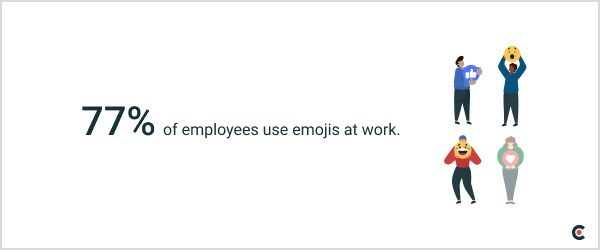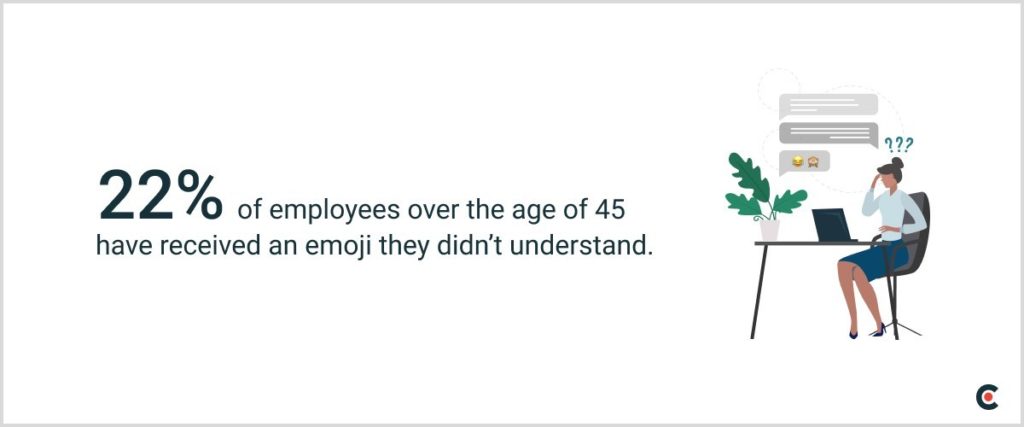
Clutch finds that 77% of employees use emojis at work, despite differing perspectives on professionalism.
As the workplace environment adapted to remote work, more than 75% of employees found themselves using emojis more frequently in Slack, emails, and other communication channels, according to a new report from Clutch, the leading B2B ratings and reviews platform.
The divide of emoji use in the workplace, however, still lies in the possibility of misinterpretation in professional work channels and within older generations.
For employees that use emojis at work, there are certain advantages — emojis help to convey a tone without words (17%), allow users to express emotions virtually (14%), cultivate a less formal work culture (11%), and help users respond to messages quicker (7%).

Joshua C. Moon, an accountant at Sunshine Accounting & Bookkeeping, believes that emojis make work communication more exciting.
“Communication on a daily basis at work can become very monotonous and emojis have a natural way of shifting the mood in a workplace,” said Moon.
With the loss of in-office culture, emojis can create connections. But many believe that there is a time and place for their use.
Employees Believe that Emojis in Emails Are Unprofessional

The email marketing tactic of adding emojis in subject lines doesn’t work in a business environment. While 33% of employees use emojis in their email correspondence at work, 60% of employees believe that emojis in work emails are unprofessional.
Chris Riley, co-founder and CEO of USA Rx, agrees that there is a time and place for emojis.
“I prefer not to have emojis in workplace memos or in serious emails to clients as they can distract from the tone you’re trying to strike,” said Riley.
Employees that use emojis in emails should consider their messaging and intent before use.
Veteran Employees Are More Likely to Misinterpret Work Emoticons
While younger generations started their online journeys earlier, their work colleagues in older generations are less likely to understand emojis they receive.
Nearly a quarter of employees (22%) over the age of 45 have received an emoji that didn’t understand at work.
Chelsea Roller, a content marketing manager at Rank Fuse Digital Marketing, believes that generational gaps are alive and well in the workplace.
“Younger generations tend to dress more casually, speak more casually, and communicate with others through text and email more casually,” Roller said. “Older generations aren’t as used to emojis being part of their daily communications.”
Emojis in the workplace can build connections, but it is up to the employee to consider their audience before pressing send.
Clutch surveyed 500 Americans in October and November 2020 to learn about their emoji habits in the workplace
Read the full report here: https://clutch.co/bpo/resources/work-emoticons-translation-mistakes
